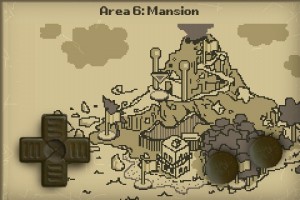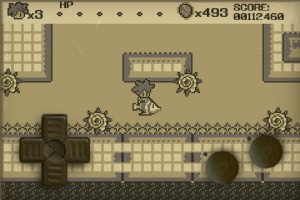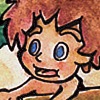 What’s the hardest part of faithfully replicating the Nintendo Game Boy experience on iOS? When it comes to the amount of work put into Kale’s aesthetics, controls, in-game physics, or audio engineering, is there anything you’re especially proud of that players might not pick up on?
What’s the hardest part of faithfully replicating the Nintendo Game Boy experience on iOS? When it comes to the amount of work put into Kale’s aesthetics, controls, in-game physics, or audio engineering, is there anything you’re especially proud of that players might not pick up on?
IG: The hardest/best part was that Kale was buggy and laggy in its original form. The game was a little ambitious for its hardware. It required a lot of vertical movement (e.g., to jump and ride on enemies). It was too busy visually and sonically. For instance, there are some parts where you find more enemies onscreen than your average well-designed Game Boy game. This would create a delay in gameplay at a crucial moment, and practically stopped the music. However, when porting to the iPhone, it seemed pointless to replicate these awkward experiences.
One major change that took us a while to finally settle on was an independent soundtrack. For people who aren’t familiar, the Game Boy had four tracks for playing audio. When playing sound effects, either the music was intelligently composed to leave a channel free, or a track had to momentarily stop playing music samples. Kale was guilty of the latter, and since there were a lot of enemies at once sometimes, all playing sound effects, the original Kale ended up becoming a generative musical experience. This was too avant-garde for us to allow, so Kale for iOS actually features five or six audio tracks at once.
Other than that, the level designs are pretty spot on. The feel of controlling Kale was a huge focus of development. As you can tell, we wanted to make it look like you’re playing something more than a decade old. There’s even some cute little scratches near the controls! A lot of people have been worried about the touch controls. We guarantee that Kale on the iOS will be at least as playable as the original, if not more responsive.
 J: The hardest part is keeping a limit on the size of levels and scope of the game. Going into production, we (very much) thought we were making a close remake. But upon prototyping, we realized that emulating the original game wouldn’t be fun to players. Many people say they love Game Boy games, but going back and playing some of the lesser-known titles, you realize they don’t hold up well to today’s design standards. In addition, the levels in Kale are what I would call “super-widescreen” Game Boy levels. They aren’t to the original resolution of the Game Boy,
J: The hardest part is keeping a limit on the size of levels and scope of the game. Going into production, we (very much) thought we were making a close remake. But upon prototyping, we realized that emulating the original game wouldn’t be fun to players. Many people say they love Game Boy games, but going back and playing some of the lesser-known titles, you realize they don’t hold up well to today’s design standards. In addition, the levels in Kale are what I would call “super-widescreen” Game Boy levels. They aren’t to the original resolution of the Game Boy,
because we had to reconcile the different screen types and factor in onscreen controls.
I am proud of the screen scratches and the subtle flickering of the screen. When you pick up a Game Boy and actually look at it, the screen is very hard to see! Looking back to when I was a kid, I don’t remember that, but it’s there. The Game Boy had this organic screen that you could get close to, and backlit screens like the iPhone’s don’t allow for that level of intimacy. Kale’s visuals are also faded, but unfortunately, we can’t change the way the physical iPhone screen looks.
I am also very proud of IG, who is still working on the new tracks for each area. Sound is very important to the game. I hope people play with the sound on, because otherwise (among other reasons) they will miss key moments.


